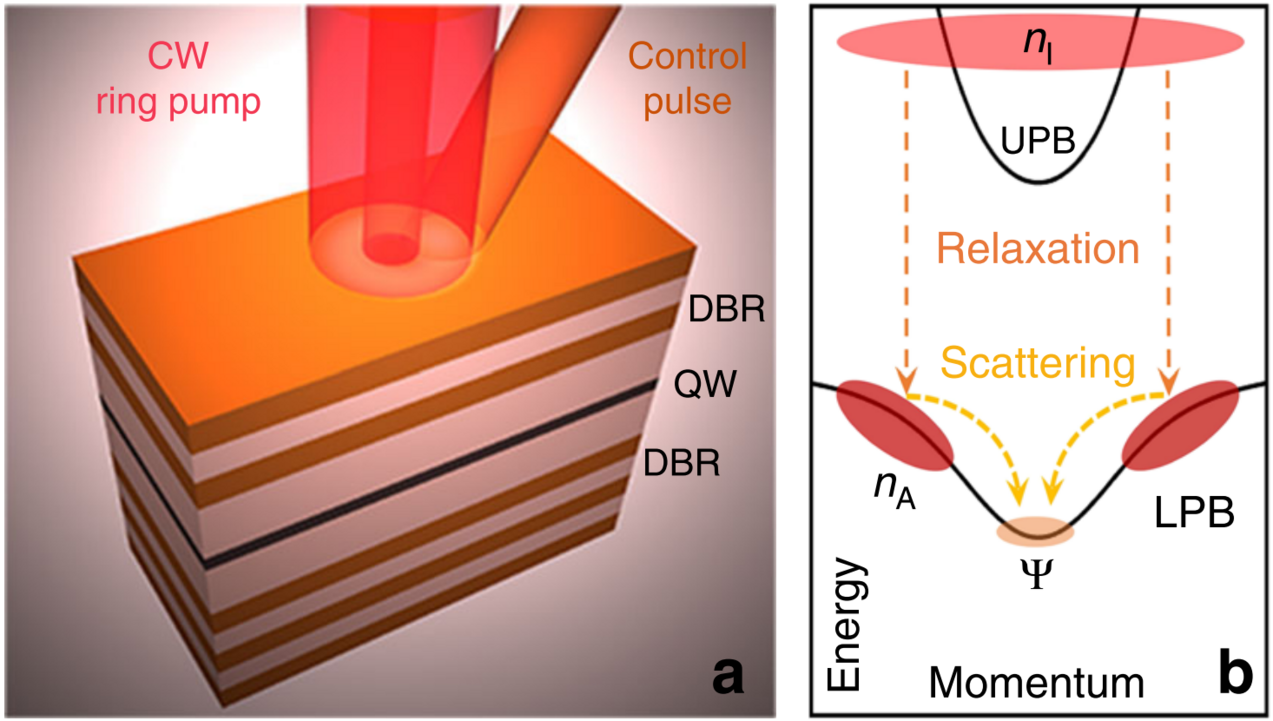
Nonlinear phenomena in microcavity polariton systems
Microcavity polaritons are quasi-particles composed of cavity photons and excitons in semiconductor microcavities. The polariton-polariton interaction gives rise to strong nonlinearity that results in rich nonlinear phenomena such as formation of solitons, optical bistability, modulational instability, and vortices. A vortex carrying a quantized topological charge can be regarded as a binary information carrier which has potential application in information processing. We explore novel nonlinear phenomena of polaritons in the presence of lattices and including the pseudospin degree of freedom.
- Realization of all-optical vortex switching in exciton-polariton condensates
X. Ma, B. Berger, M. Aßmann, R. Driben, T. Meier, C. Schneider, S. Höfling, and S. Schumacher, Nat. Commun. 11, 897 (2020). - Circular polarization reversal of half-vortex cores in polariton condensates
M. Pukrop, S. Schumacher, and X. Ma, Phys. Rev. B 101, 205301 (2020). - Vortex Multistability and Bessel Vortices in Polariton Condensates
X. Ma and S. Schumacher, Phys. Rev. Lett. 121, 227404 (2018). - Creation and Manipulation of Stable Dark Solitons and Vortices in Microcavity Polariton Condensates
X. Ma, O. A. Egorov, and S. Schumacher, Phys. Rev. Lett. 118, 157401 (2017).
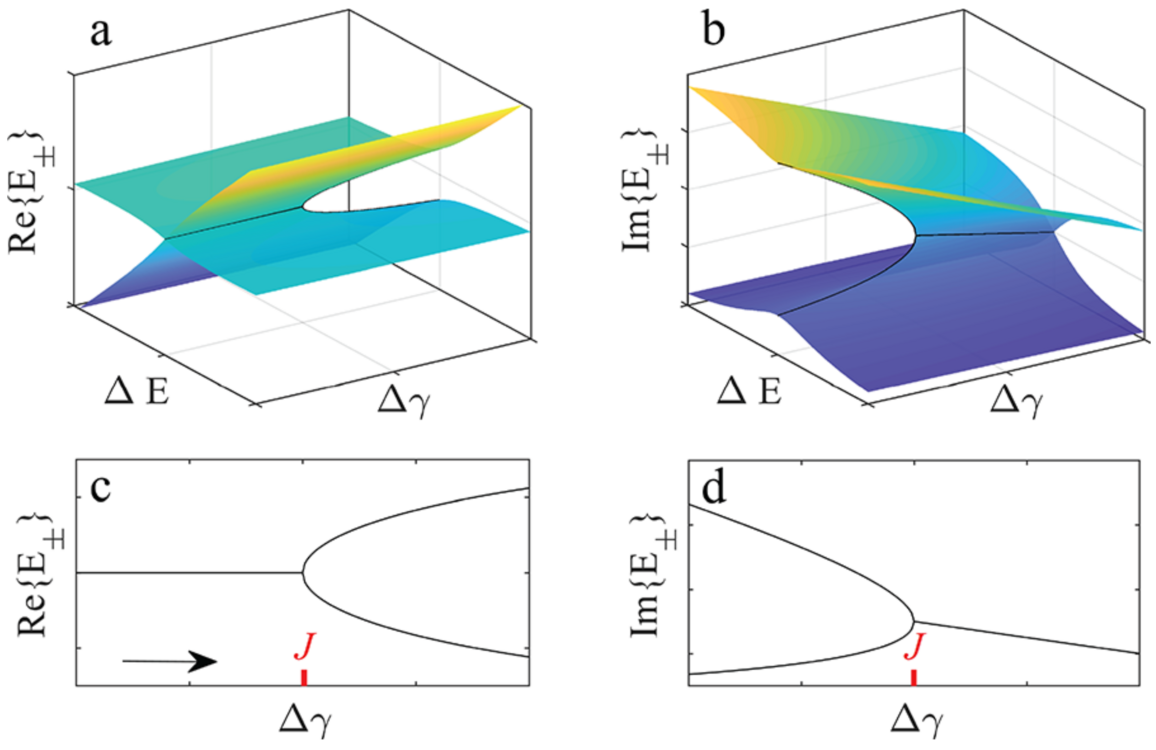
PT-symmetry and non-Hermitian physics
Polaritons in semiconductor microcavities are natural dissipative systems, which provides a perfect platform to study non-Hermitian physics. The eigenenergies of a non-Hermitian Hamiltonian are generally complex-valued; however, they can still be real-valued if the non-Hermitian Hamiltonian satisfies the parity-time (PT) symmetry. A PT-symmetric system can experience a phase transition from an entirely real-valued eigenvalue spectrum to a complex-valued one when the ratio between the imaginary part and real part of the complex potential exceeds a certain critical value, known as symmetry-breaking point or exceptional point. The exceptional point occurs when both the eigenenergies and eigenvectors of the system coalesce. We are interested in how these exceptional points influence the dynamics of hybrid polaritons.
- Switching Off a Microcavity Polariton Condensate near the Exceptional Point
Y. Li, X. Ma, Z. Hatzopoulos, P. G. Savvidis, S. Schumacher, and T. Gao, ACS Photonics 9, 2079–2086 (2022). - Controllable high-speed polariton waves in a PT-symmetric lattice
X. Ma, Y. V. Kartashov, T. Gao, and S. Schumacher, New J. Phys. 21, 123008 (2019).
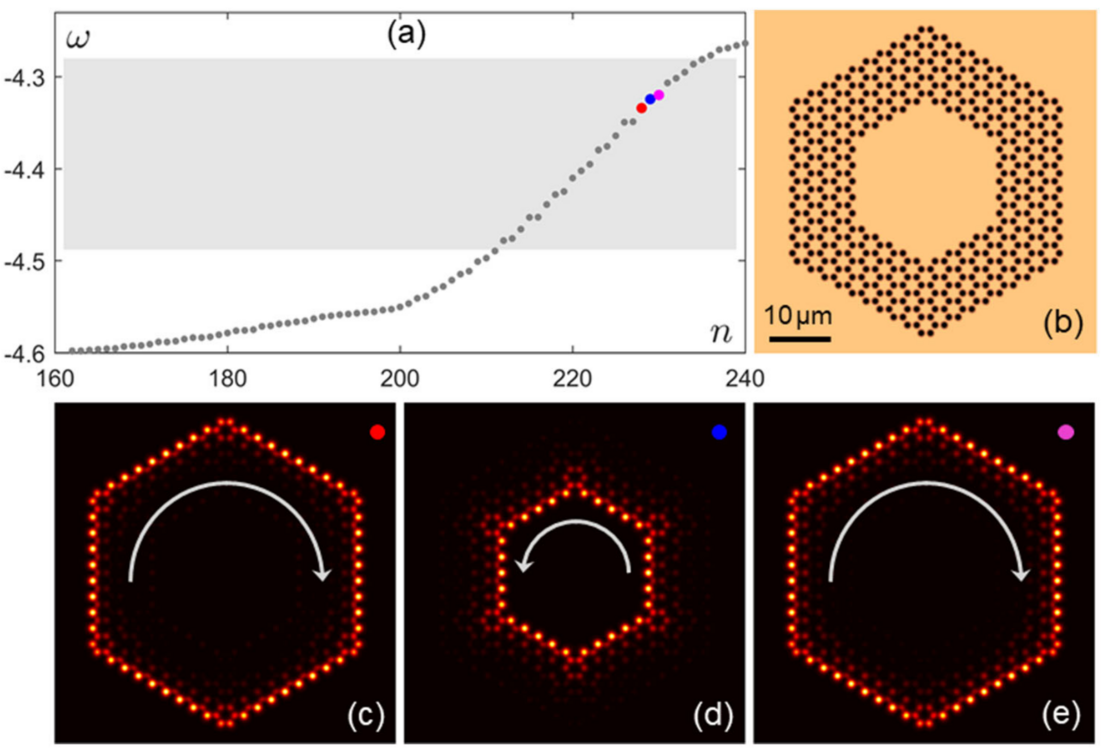
Topological insulators in polariton condensates
Topological insulators have been widely studied in electronic and photonic systems due to the unique topologically protected edge states that provide the unidirectional propagation of the particles or waves. Recently, topological edge states in polariton condensates have attracted significant attention, ascribed to that polaritons have both the advantages of light and matter. We plan to investigate and design lattice structures for the realization of novel types of polariton topological insulators. Studies of the influence of the nonlinearity on the topological edge states is also very promising.
- Topological edge states of nonequilibrium polaritons in hollow honeycomb arrays
X. Ma, Y. V. Kartashov, A. Ferrando, and S. Schumacher, Opt. Lett. 45, 5311-5314 (2020).
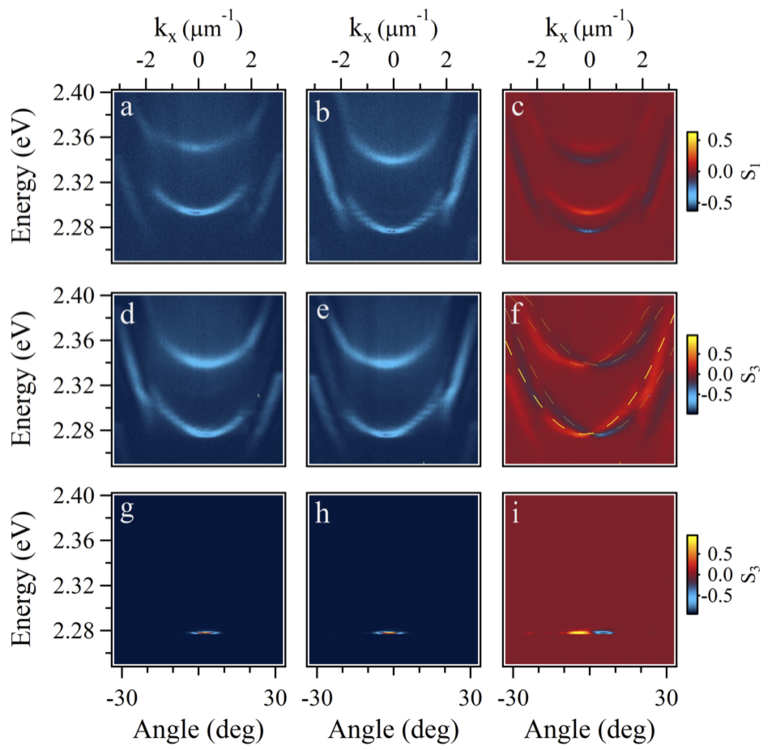
Optical spin-orbit interaction in semiconductor microcavities
Organic materials are typically anisotropic and as active layers in semiconductor microcavities they can mediate only specifically polarized cavity photon modes. This leads to a strong XY splitting that is essential for the realization of Rashba-Dresselhaus spin-splitting and optical activity. Taking into account the TE-TM splitting, the system can show very rich physical behavior making these systems a promising platform to study the interplay of spin-orbit interaction and topological photonics/polaritonics.
- Manipulating polariton condensates by Rashba-Dresselhaus effect at room temperature,
Y. Li, X. Ma, X. Zhai, M. Gao, H. Dai, S. Schumacher, and T. Gao, Nat. Commun. 13, 3785 (2022). - Realization of Exciton-Mediated Optical Spin-Orbit Interaction in Organic Microcrystalline Resonators
J. Ren, Q. Liao, X. Ma, S. Schumacher, J. Yao, H. Fu, Laser Photonics Rev. 16, 2100252 (2022).
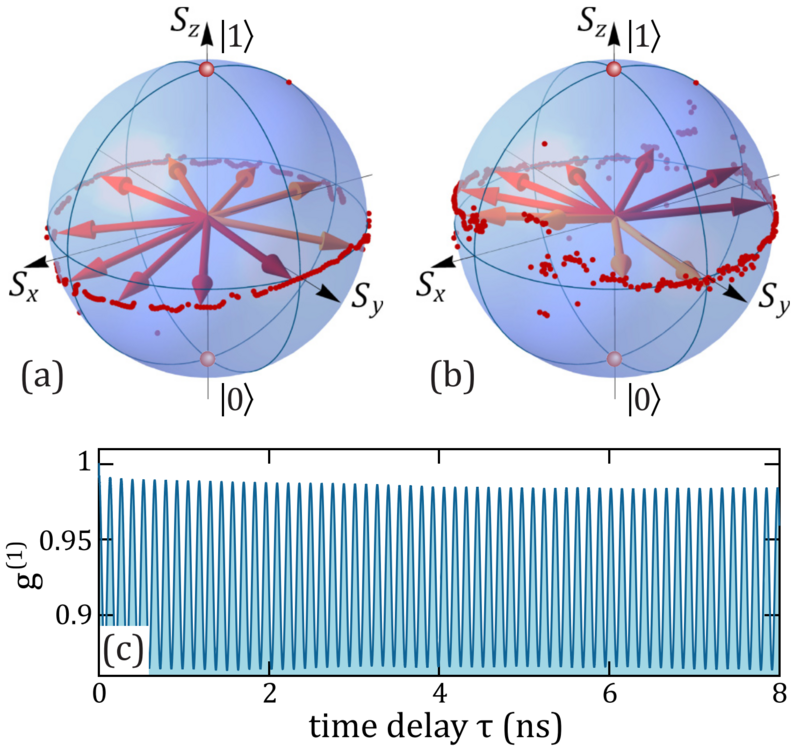
Polariton qubits towards quantum computing
Polariton condensates are also found to be a promising candidate for the realization of photonic quantum bits (qubits). These form the basic unit in the implementation of quantum algorithms that can be used in photonic quantum computing. Recently, we proposed a possible realization in the form of a split-ring polariton condensate that exhibits pronounced coherent oscillations passing periodically through clockwise and anticlockwise current states. These oscillations may persist far beyond the coherence time of polariton condensates. These qubits based on split-ring polariton condensates are expected to possess very high figures of merit.
- Split-ring polariton condensates as macroscopic two-level quantum systems
Y. Xue, I. Chestnov, E. Sedov, E. Kiktenko, A. K. Fedorov, S. Schumacher, X. Ma, and A. Kavokin, Phys. Rev. Research 3, 013099 (2021)
